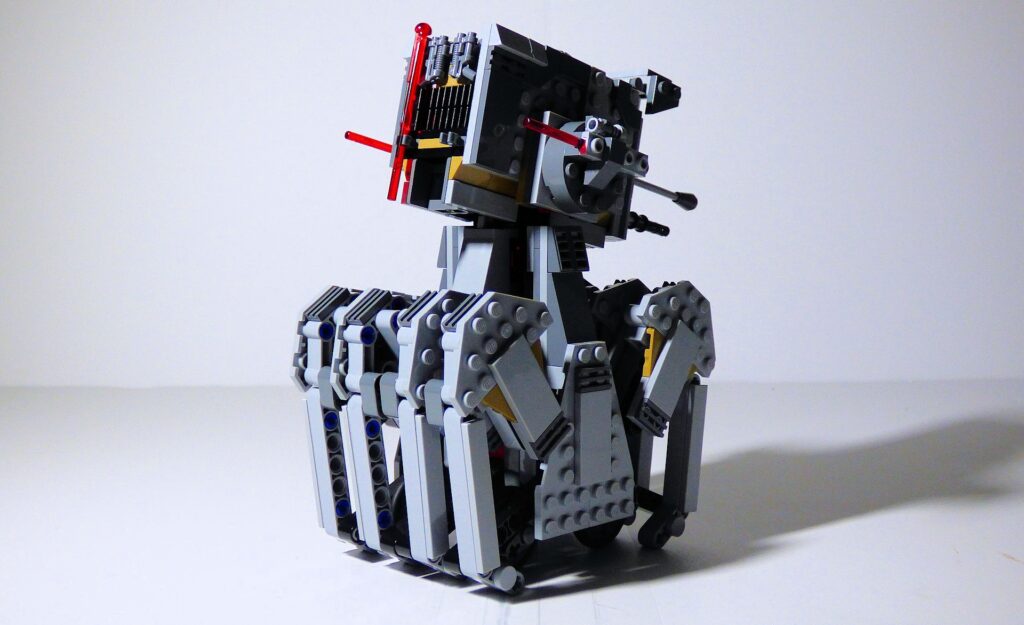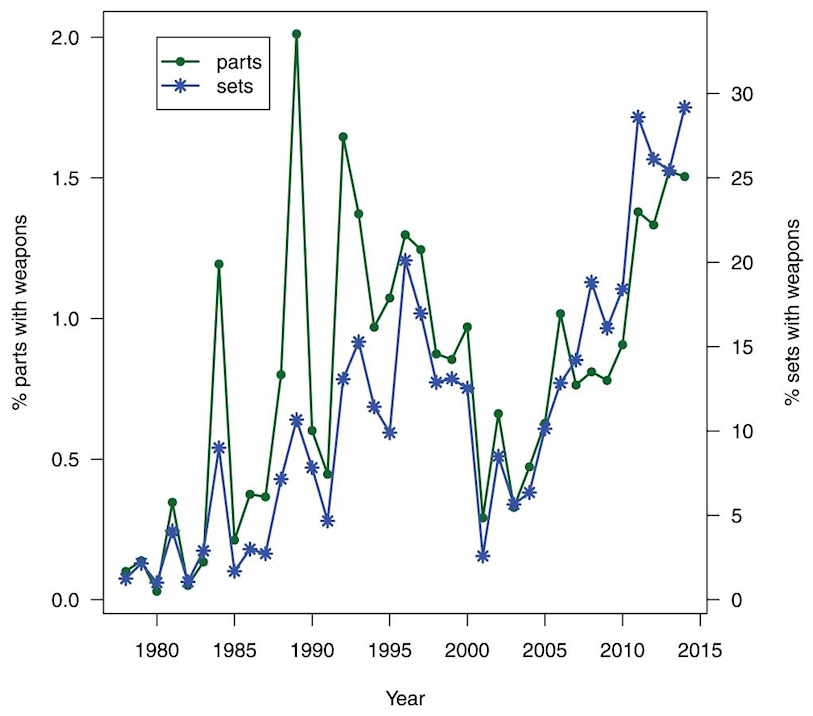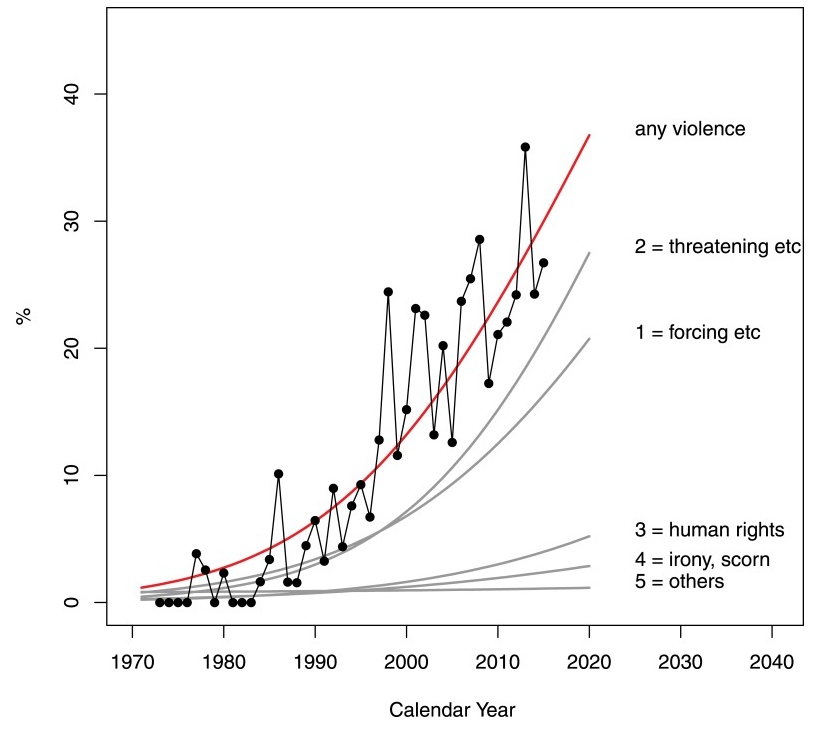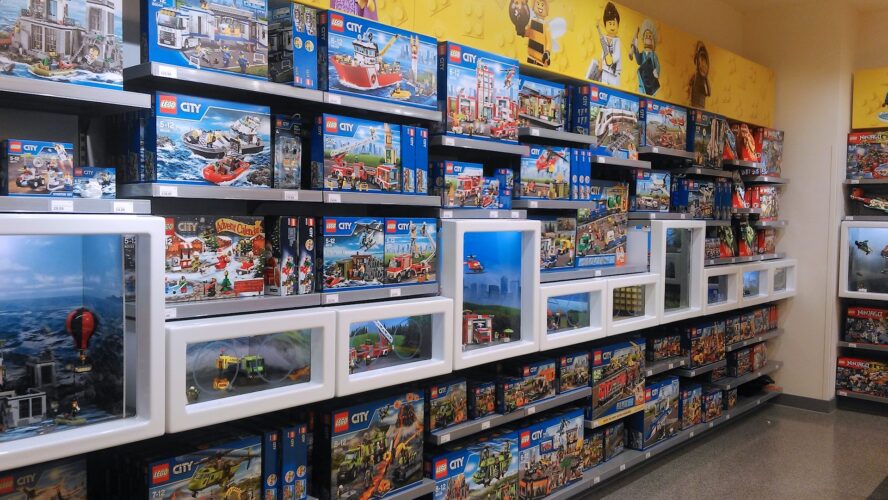Lego bricks are one of most celebrated toys in history. The interlocking plastic toy blocks were introduced by Danish company Lego in 1949. In 1958 the brick design was perfected. Company engineers have spent five years trying to find the perfect material. After they picked the material (ABS plastic) and the basic design, it never changed again. You can take Lego blocks from 1960s, pick a new set in a toy store today, and the bricks will lock together like charm.
Media today have been accused of becoming increasingly violent. Movies and TV shows depicting violent behaviors, video games, and even cartoons featuring violence are more abundant. Some (if not all) parents are concerned about violence having effect on their children. It may impact their development, normalize violence in their minds, and desensitize their emotional response to violent behaviors. This has been confirmed by scientific studies like “The Impact of Electronic Media Violence: Scientific Theory and Research” by L. Rowell Huesmann (The University of Michigan).
Are toys becoming violent as well?
A group of scientists in New Zealand decided to investigate presence of violent themes in Lego brick sets between 1978–2014. Specialists from Human Interface Technology Lab (HITLabNZ), a statistician and scientists dealing with media and humanities (all from University of Canterbury) banded together in 2014-2015 and methodically analyzed the Lego toy sets.
They picked Lego, as a perfect representative of toy industry. The company is known and present throughout the world. Lego toys are sold in 140 countries. 60 billion blocks were manufactured in year 2014 alone. Their brick sets are nicely presented in catalogs, which helps the investigation process.

Lego weapons – numbers incresing over time
Researchers had a close look at two aspects: Lego brick weapons and perceived violence in Lego sets. For the first aspect, they counted all sets released in given year. For example, there were 35 sets released in 1970, and 419 Lego sets in 2010.
Then they counted:
- new weapon bricks (new types of bricks that can be described as a weapon, such as swords, guns)
- proportion of sets with weapons (percentage of Lego sets that contain at least one weapon brick)
- proportion of all weapon bricks (compared to all bricks in all sets available in a given year).
The conclusion was evident. The presence of weapons significantly and steadily increased in Lego block sets over time. In 1978 approximately 1% of sets had a weapon, and about 0.1% of all bricks were a weapon. In 2014, 29% of Lego sets featured a weapon, and 1.5% of all available bricks were a weapon.

Lego perceived violence increasing over time
The perceived violence was analyzed in a crowdfunded study. Over 1500 images depicting block sets from Lego catalogs (dated from 1973 to 2014) were resized and formatted to have a similar look, and then randomized. 161 participants were paid $6/hour to look at Lego set images, and rate several aspects of violence in the sets. The aspects included mode(s) of physical violence, realization of violence, consequences of violence, clarity and vividness of violent act(s). Participants spent 48 hours in total, looking at photos of Lego, and reviewing their perceived violence.
The conclusion: perceived violence was not featured in any of Lego toy sets between 1973 and 1976. Afterwards it steadily increased to reach an all-time-high in 2012: 42% of Lego sets featured some kind of violence. In 2013-2014 presence of violence dropped to 32-33%, but that’s still a significant number.

Of course, the trend is not limited to Lego, which was selected mainly because of wide availability of materials to investigate. Availability of Lego also helped to research the process of decomposition of plastic materials. Even Playmobil toys, which are typically aimed at very young children have been found to feature increasingly violent themes. The civilization and the governments need to take these results into consideration. Video games, movies and television are all closely monitored by independent agencies like RIAA whereas actual toys featuring violent themes can be manufactured and sold with almost no supervision (just make sure nobody chokes on it).
Popularity of Lego toys was also helpful in investigating how long does it take for plastic to degrade by analyzing Lego pieces washed up on beaches.
But, as many of us have experienced, no violence can be compared to violence unleashed after one steps on a Lego brick with bare foot. Ouch.
Top photo by Simeon87 (CC-BY) / Wikimedia Commons



Permalink
Permalink
This was one of dumbest reads I had in awhile. Keep up the great work
Permalink
It’s also correct. Lego has moved away from the generally peaceful and explorative sets of my childhood, I mean I recently saw a WW2 Pacific Theatre battle set in the Japanese invasion of China! Now that’s just sick, as far as I’m concerned.